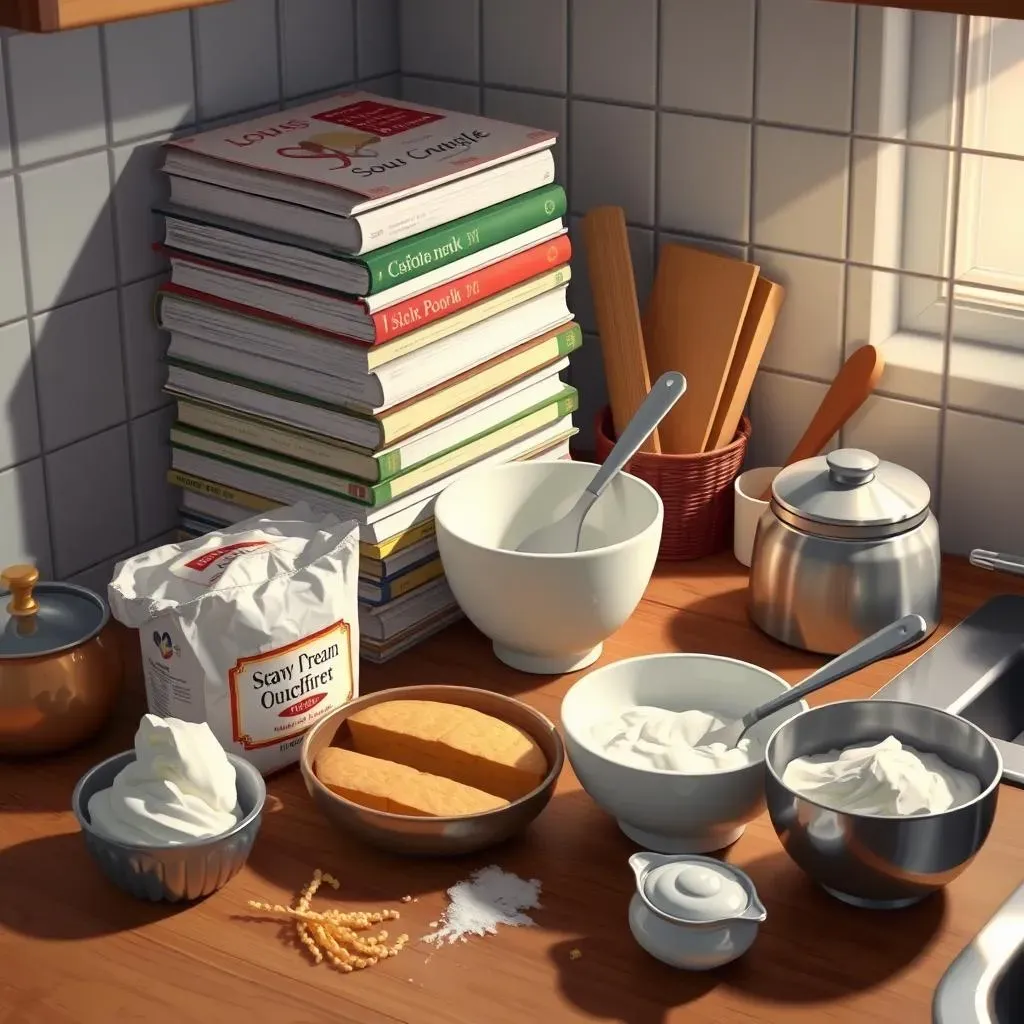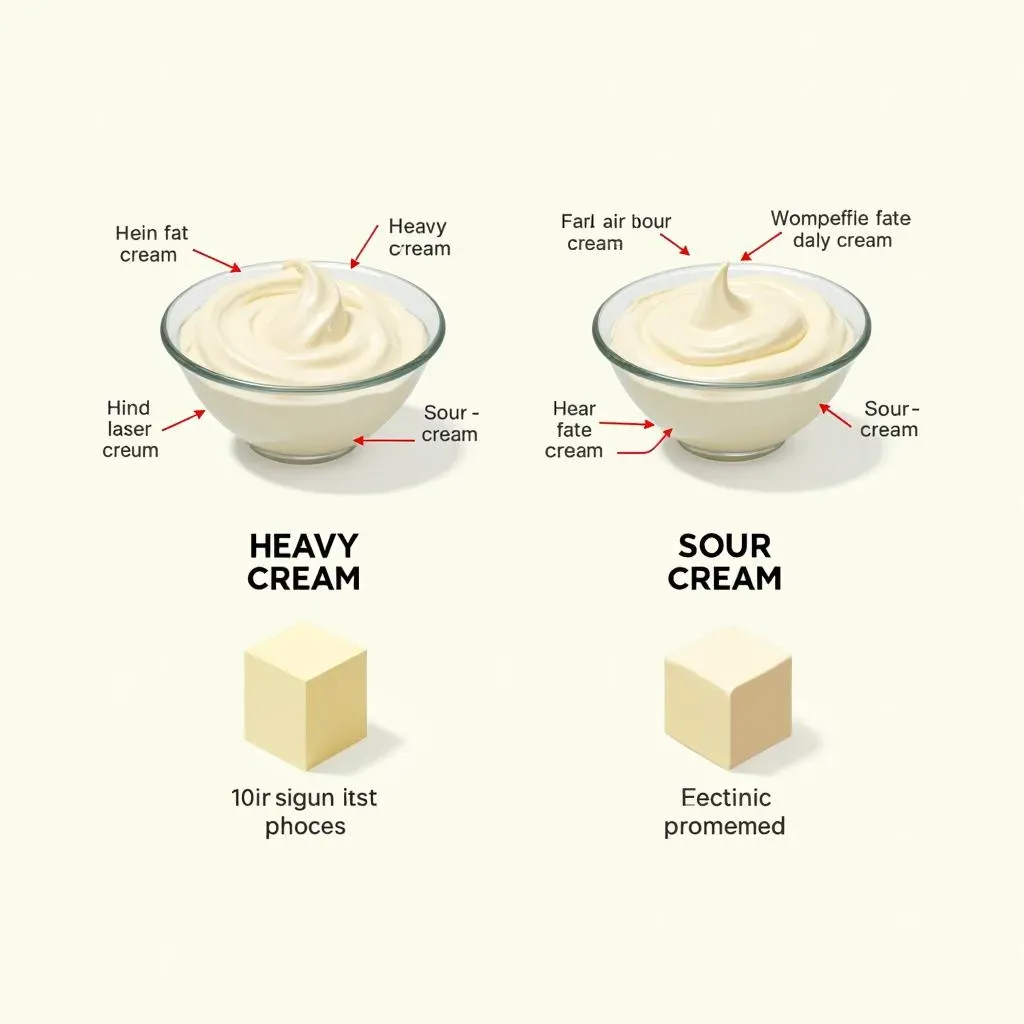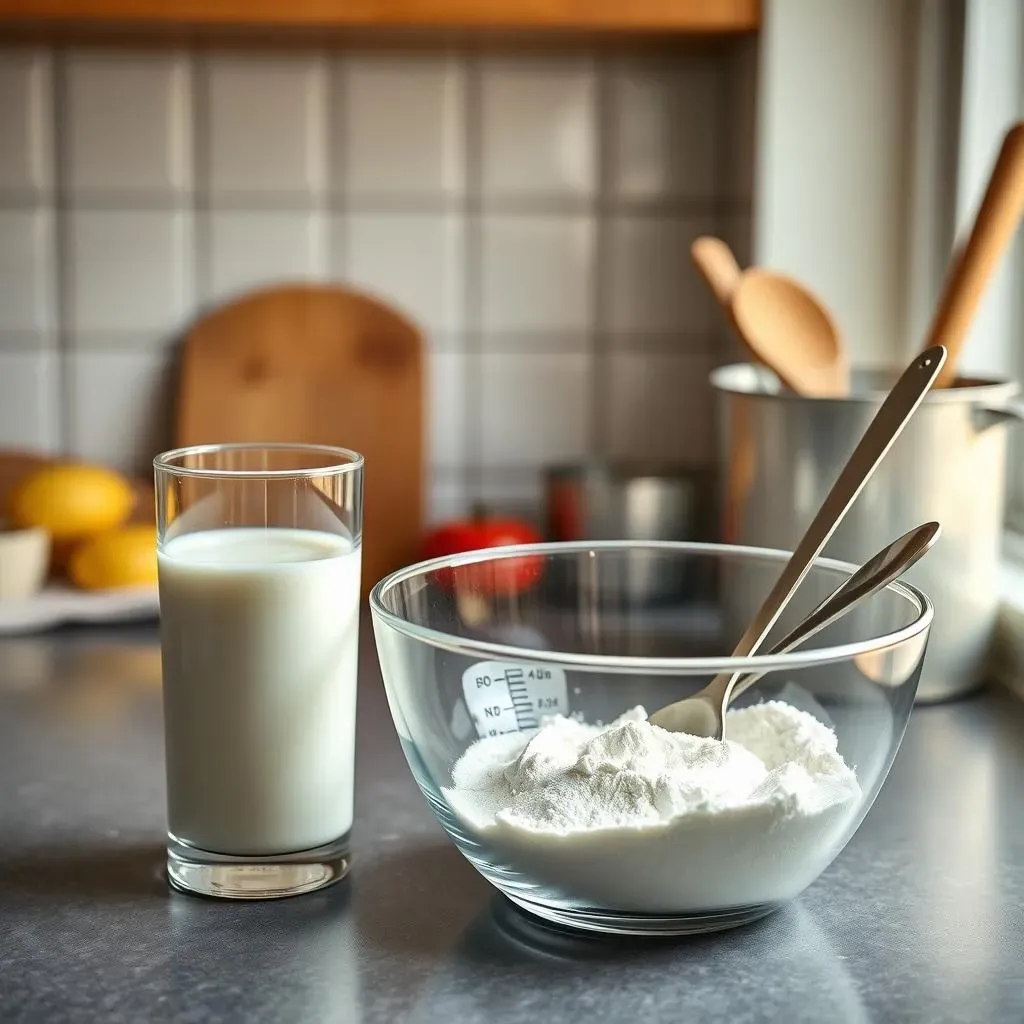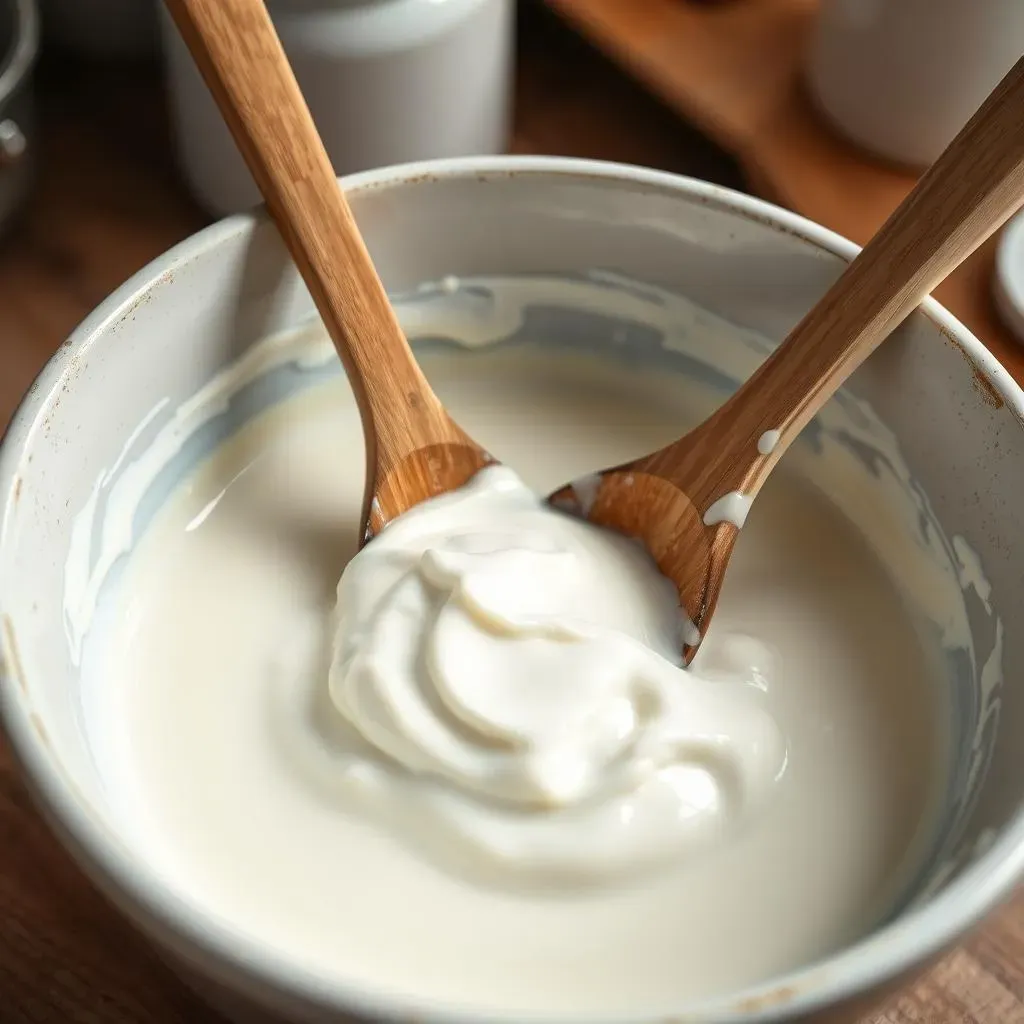Table of Contents
Ever found yourself mid-recipe, only to discover you're out of heavy cream? It's a kitchen crisis we've all faced. But don't panic! There's a tangy hero waiting in your fridge: sour cream. Yes, you can absolutely substitute sour cream for heavy cream in many recipes, and sometimes it's a game changer. This isn't just about swapping ingredients; it's about understanding how these two dairy delights differ and how that impacts your cooking. We'll explore the science behind why this substitution works, look at some practical examples, and even tackle some potential issues you might run into. Think of this as your guide to navigating the creamy world of cooking, where a little sour can sometimes be the secret to success. So, let's get started and transform that kitchen mishap into a culinary win. By the end of this article, you will be armed with the knowledge to use sour cream as a substitute for heavy cream with confidence.
When to Substitute Sour Cream for Heavy Cream

When to Substitute Sour Cream for Heavy Cream
Okay, so you're wondering when it's a good idea to swap sour cream for heavy cream, right? It's not a one-size-fits-all kind of thing. Think of it like this: heavy cream is like that super rich friend who's always up for a party, while sour cream is the cool, slightly tangy one who brings a bit of edge. In situations where you need that creamy richness but also don't mind a little tang, sour cream can be your go-to. It's fantastic in things like soups, sauces, and even some baked goods where the slight sourness can add depth. However, if you're trying to whip up something that needs the pure, unadulterated fat of heavy cream, like whipped cream or a super delicate custard, sour cream might not be your best bet. It's all about understanding the flavor profile and desired texture of your dish, so let's start to break it down.
Use Sour Cream When: | Avoid Sour Cream When: |
|---|---|
You want a touch of tang. | You need a neutral, sweet flavor. |
You're making soups or sauces. | You're making whipped cream. |
You're baking something like coffee cake. | You're making a very delicate custard. |
You want a thicker consistency. | You need a very light and airy texture. |
The Science Behind Substituting Sour Cream for Heavy Cream

The Science Behind Substituting Sour Cream for Heavy Cream
Alright, let's get into the nitty-gritty of why this substitution works. It's not just kitchen magic; there's some science involved. Both heavy cream and sour cream are dairy products, but the key difference lies in their fat content and what's been done to them. Heavy cream is basically the high-fat portion of milk, clocking in at around 36% or more fat. This high-fat content is what gives it that rich, velvety texture and allows it to whip up into fluffy clouds. Sour cream, on the other hand, is made by fermenting regular cream with lactic acid bacteria. This process not only gives it that signature tangy flavor but also thickens it up and slightly lowers its fat content, usually to around 20%. So, when you substitute sour cream for heavy cream, you're not just swapping textures; you're also playing with fat levels and adding a bit of acidity to the mix.
The fermentation process is really what makes sour cream unique. The lactic acid bacteria convert lactose (the natural sugar in milk) into lactic acid. This acid is what gives sour cream its tartness and also causes the proteins in the cream to coagulate, resulting in that thick texture. It's also why sour cream tends to curdle if you heat it too quickly or at too high a temperature. Heavy cream doesn't have this problem, thanks to its higher fat content and lack of fermentation. That's why, when you make this swap, you need to be mindful of the heat and how it might affect your final dish. It's all about balancing that tangy flavor with the desired consistency in your recipe.
Factor | Heavy Cream | Sour Cream |
|---|---|---|
Fat Content | 36% or more | Around 20% |
Flavor | Rich, neutral | Tangy, acidic |
Texture | Smooth, fluid | Thick, slightly curdled |
Heat Stability | High | Moderate (can curdle) |
Processing | Separated milk fat | Fermented with bacteria |
How to Substitute Sour Cream for Heavy Cream in Recipes

How to Substitute Sour Cream for Heavy Cream in Recipes
Okay, so you're ready to get down to the practical stuff, right? Let's talk about how to actually substitute sour cream for heavy cream in recipes. The good news is, it's usually a pretty straightforward swap. For most recipes, you can use a 1:1 ratio. That means if your recipe calls for one cup of heavy cream, you can use one cup of sour cream instead. But here’s the thing, remember that sour cream has that tangy flavor and is a bit thicker, so you might need to adjust things slightly. For example, if you're making a creamy soup, adding sour cream at the very end, off the heat, can prevent it from curdling. It's all about being a little mindful of how heat and acidity will play together in your dish.
Also, consider the overall moisture content of your recipe. Since sour cream is thicker than heavy cream, it might make your dish a little denser. If you're finding things are too thick, you can thin out the sour cream with a little milk or water to reach the consistency you need. Think of it like this: you're not just swapping one ingredient for another; you're adapting to the unique qualities of sour cream. It's all about being flexible and tasting as you go. Sometimes, a little experimentation is the key to unlocking the best flavor and texture. So, don't be afraid to tweak things to get your dish just right. Let's look at some examples, shall we?
Recipe Type | Substitution Notes |
|---|---|
Soups & Sauces | Add sour cream at the end, off the heat, to prevent curdling. |
Baked Goods (e.g. coffee cake) | Adjust liquid if the batter is too thick. |
Casseroles | Sour cream works well for creamy texture, adjust seasonings if needed. |
Dips and Dressings | Use 1:1 ratio; may need to add more liquid for desired consistency. |
Troubleshooting When Using Sour Cream as a Heavy Cream Substitute

Troubleshooting When Using Sour Cream as a Heavy Cream Substitute
Alright, let's talk about what to do when things don't go exactly as planned, because let's face it, sometimes they don't. Using sour cream as a substitute for heavy cream can be a bit of a balancing act, and you might run into a few snags along the way. The most common issue? Curdling. This happens when the sour cream gets heated too quickly or at too high a temperature. It's like the proteins in the sour cream just can't handle the heat, and they start to clump together, creating an unpleasant texture. To avoid this, always add sour cream at the end of cooking, off the heat, and stir it in gently. Another thing to watch out for is the tang. If you find the sour cream flavor is overpowering your dish, try adding a pinch of sugar or a splash of milk to balance things out. Remember, it's all about adjusting as you go, and every recipe might need a slightly different approach.
Another potential hiccup is consistency. Since sour cream is thicker than heavy cream, it can sometimes make your dishes a bit too dense. If that's the case, you can thin it out with a little milk or water until you get the texture you want. Start with a tablespoon at a time and add more as needed. It's much easier to add more liquid than it is to take it away. And if you're using sour cream in baking, remember that it has a higher moisture content, so you might need to adjust the other liquid ingredients slightly to ensure your baked goods don't come out too wet. It's like a little puzzle, and you're the master solver. So, don't be afraid to tweak things here and there to get it just right. Let's look at some common issues and their solutions, shall we?
Issue | Solution |
|---|---|
Curdling | Add sour cream at the end, off the heat. |
Overpowering tang | Add a pinch of sugar or a splash of milk. |
Too thick | Thin with milk or water, one tablespoon at a time. |
Too dense in baking | Adjust liquid content of other ingredients. |